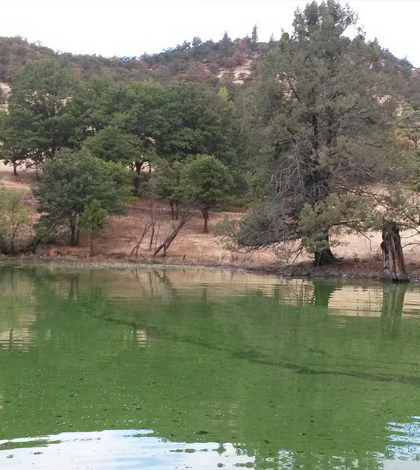Report: Toxic Blue-Green Algae Pose Increasing Threat To Drinking And Recreational Waters

Toxic Microcystis algae grow in a large bloom in the Copco Reservoir on the Klamath River, posing health risks to people, pets and wildlife. (Courtesy of Oregon State University)
A new report declares that rising levels of toxic blue-green algae are threatening the health of drinking and recreational waters in the United States, according to a release from Oregon State University. Scientists at the university were joined by others at the University of North Carolina in making the report, which has been published in the journal Current Environmental Health. It discusses the little attention that algae receive.
Blue-green algae, or cyanobacteria, levels have increased as a result of a number of factors including low snowpack, damming rivers, climbing carbon dioxide levels and temperatures. Federal and state drinking water regulators are not required to test for blue-green algae or report disease outbreaks related to the algal blooms.
Cyanobacteria can produce neurotoxins that can cause illness in humans and death in animals. Scientists contend that although today’s treatment keeps water fairly safe, inadequate mandatory monitoring is problematic.
Top image: Toxic Microcystis algae grow in a large bloom in the Copco Reservoir on the Klamath River, posing health risks to people, pets and wildlife. (Courtesy of Oregon State University)





0 comments